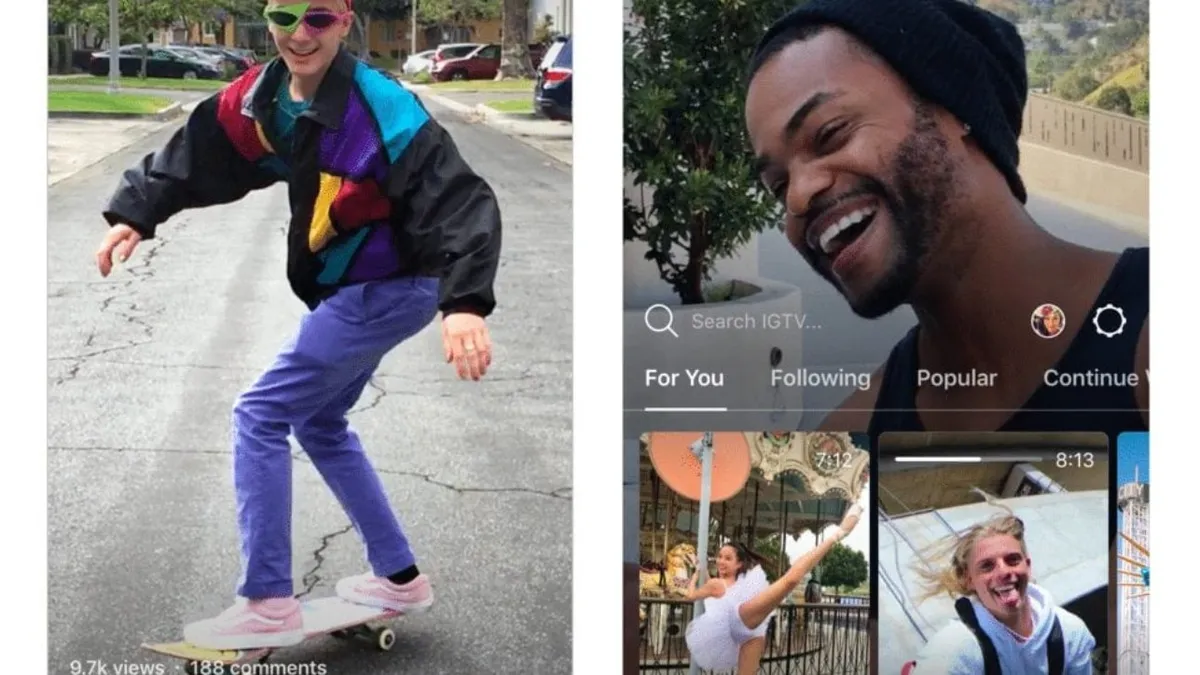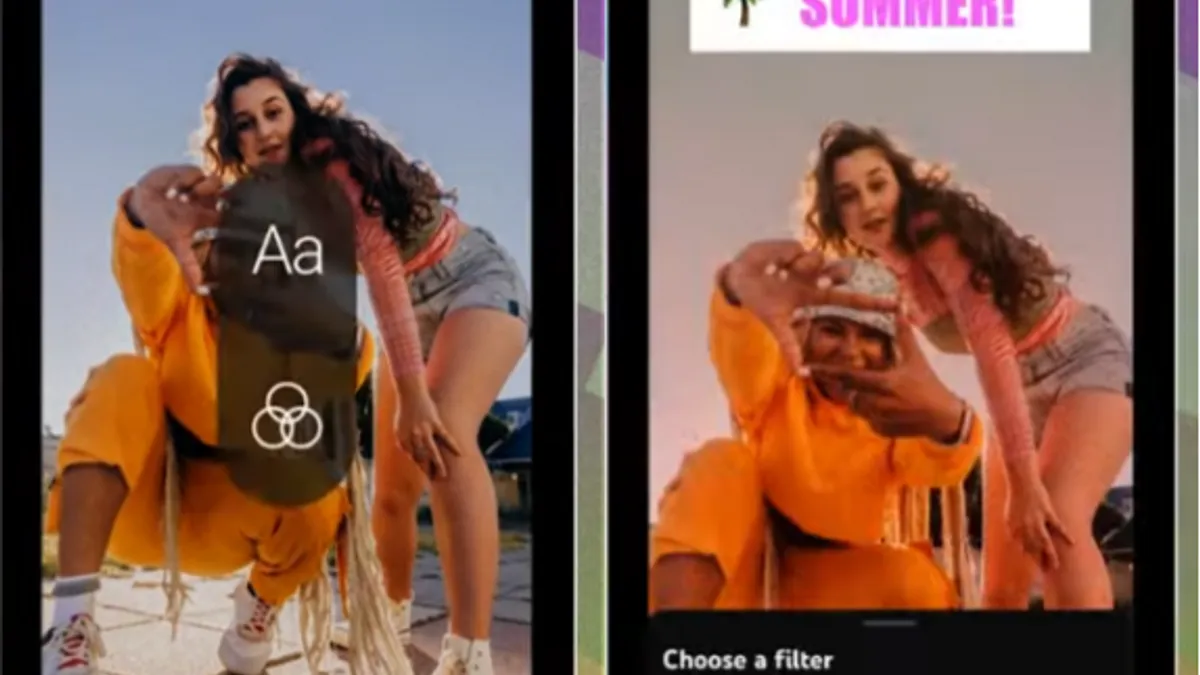There are now more than a billion people using Instagram each month - that means there are more than a billion humans who know that vertical video exists.
Now, episodic vertical video is mainstream. With the release of Instagram’s IGTV, it’s clear that Instagram believes that vertical videos are not only here to stay, but have become the preferred way for many to watch content on their mobile devices.
But this isn’t news to us.
At my company, Delmondo, we bet big on the growth of vertical video four years ago when the company was founded and we rolled out the first Snapchat analytics platform.
Today we help a growing range of partners measure the performance of their vertical video efforts on Snapchat, Snapchat Discover, Instagram and Instagram Stories, Facebook, Twitter, YouTube… vertical video is everywhere.
When we first wrote about this trend, creators and innovative publishers saw vertical video as an opportunity to set up more appointment viewing, breaking through the clutter of the single snaps or videos people had typically posted.
Later, the platforms themselves took note of this too, and started pushing creators to produce more of this - as we wrote about Snapchat’s vision of creating mobile TV with Discover in our piece titled “I Want My Snapchat TV” back in 2016:
"Snapchat is the new force in the space, capturing the attention of eyeballs shifting from the Television screen to the most important screen in the world, the one that goes with you everywhere you go. And it’s not just your eyeballs, an intent-based loading system means that users actually have to engage with a Snap to open and view it fullscreen. With millions of people giving Snapchat 100% of their focus in the moments they engage – this is giving way to a new, more pure attention metric."
We’ve worked with a range of brands with ambitions to make their own vertical video shows too, like Marriott Rewards who in 2017 launched the first Branded Episodic Snapchat series, multiple long-form videos not cut up into stories, but as premium long-form vertical videos with short ads as trailers. The premiere episode was named the top-performing ad on Snapchat to-date, achieving the longest average view-through rate of any campaign ever.
With excitement now brimming around IGTV, we thought we’d share a few of the things we've learned over the years.
Here are some of the elements we've found can boost the success of a vertical video series:
1. Create a fast-paced environment, this is not a lean-back experience
Think about it, for the past four years people have been conditioned to watch vertical video in short bursts of ten seconds or less - and to tap past anything that doesn’t immediately grab their attention. This learned behavior isn’t going away, which is why you need to make sure your vertical videos are fast-paced and created for the consumer on-the-go, rather than a 'lean-back on the coach' experience.
2. The first three seconds are very important
You only have around three seconds (really, more like one and a half) to grab a viewer’s attention and get them to stick around - otherwise they can swipe over to an unlimited number of other options for content.
This means you need to let people know what they are getting into.
Using data we've gathered from thousands of accounts' Instagram Stories, we’ve found that most people exit or swipe away from a story on the first frame. That makes sense when you think about it, but we still see people trying to add too much complexity into the first few seconds of a story, with title cards, long intros, etc.
With new content only a swipe away, it's imperative that you capture the attention of your viewer, and let him or her know why they should be interested in the story that's coming.

3. Animated graphics, cutscenes, mixing elements are where it’s at
Vertical video has evolved since the rough, grainy, 'no edit' days of early Snapchat. IGTV is a place for premium vertical content - so you should expect that you'll need to do some editing before you upload your post.
Final Cut Pro, Adobe Premier and even mobile apps like Perfect Video make editing and exporting in a vertical format easier than ever.

4. Access
Look to give your viewers access to people, places and events that can only be filmed on a phone.
Access is something that people expect when they watch content vertically, and mobile devices have enabled anyone, anywhere to be the videographer, leading to a new level of access for content that was previously unavailable.
Celebrities and influencers in their homes, on the go, backstage or in the dressing room at a large event are staples of the vertical content universe.
5. Authenticity
Instagram and Snapchat have both created platforms which enable creators, celebrities and influencers to talk directly to their audience. While, technically, it's a 'one person to many' relationship, anyone on the receiving end, due to the nature of replies, can engage one-on-one, and this level of connection is ingrained in the vertical video format.
When making vertical video content, be sure to interact directly with your audience - as there's a big difference between talking to someone and talking at someone.
6. Produce for the platform
Please don't do this. https://t.co/jZXAfzkTBM
— Delmondo (@Delmondo) June 21, 2018
Do not repackage horizontal video for a vertical video platform.
When you film for vertical, you film differently - you have to follow the point of interest and keep the subject centered in the shot, and you have to think about what's going on in the top and lower third portion of the screen, because you don’t want to waste space.
When you film horizontally you focus on the exact opposite, and when you crop a horizontal video to be vertical it shows.
Vertical Filmmaker, and head of TEN:FIFTEEN Creative, Mike Platco had this to say.
“If your content is going to be vertical, then there's no reason why you shouldn’t be thinking vertically from start to finish. Storyboarding, set design, filming and editing should all be done in a vertical format. If you’re using a phone, its even physically easier to film vertically than horizontally. Unfortunately I still find myself taking horizontal video elements, sometimes even wide screen shots, and turning them into vertical stories for instagram and Snapchat. Not only does this take up a huge chunk of time, but the end result is often something that clearly wasn't intended to be viewed this way. Shots are too zoomed in, the footage has trouble keeping up with characters that are panning across the screen, and there's a significant decrease in video quality.”
7. Mobile (and vertical video) is still the land of celebrities and influencers
The best performing vertical video content is still dominated by celebrities and influencers. The name and face recognition you get from partnering with existing content creators can save you thousands of dollars in paid ad promotion, and can often give you an automatic head start for any vertical content series.
8. Use data to improve your series
No matter whether you have a show on Instagram Stories, Snapchat Discover, Facebook Watch, Facebook Live or IGTV, you need to track your audience and viewership data to make informed decisions on the direction of your content. To improve you need to constantly keep an eye on what’s working, what’s not, and where people are tuning out in your videos.
It’s an exciting time to be a vertical content creator. You have more options than ever to distribute your content and anyone can create their own show using only their mobile phone.
So get out there and start creating.
This post was co-written with Mike Metzler.

















